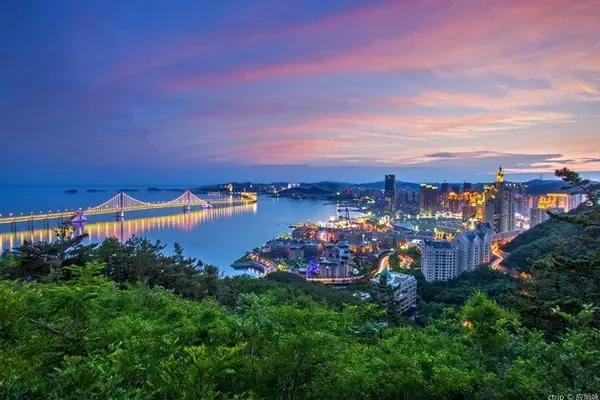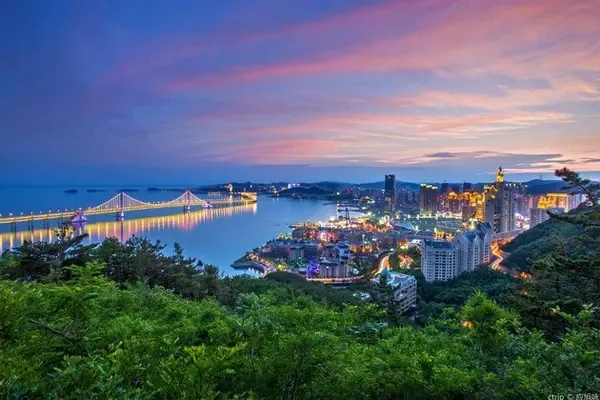The beautiful Xinjiang is a fascinating and fascinated place, and there are too many good memories left for people. Although the reporter went to Xinjiang several times, the trip to Kanas was the most memorable. On the way from Urumqi to Kanas, there are two cities, Karamay and Burqin. The third stop of the reporter's trip to the northwest is to Kanas, and Burqin is the first border town where he will stay. And only 24 kilometers away from this city is the famous colorful beach scenic spot in Xinjiang.

According to the itinerary plan of the reporter and his party, before arriving in Burqin from Urumqi, they must first visit the colorful colorful beach. Since there is a two-hour time difference between Xinjiang and Beijing, the sun sets at least two hours later than in Beijing, and it doesn't start to get dark until around 9:00 p.m. At 7:30 am on July 29, 2011, the reporter and his party set off from Urumqi. After about 10 hours of traveling, they arrived at Burqin County in the Altay Region of Ili Kazakh Autonomous Prefecture, which is the highest point of the "cocktail" in the Chinese territory at nearly 18:00.

Burqin County has high mountains, vast grasslands, and lush water and grass. It has been the place where nomadic peoples in western my country have lived and thrived since ancient times. At the same time, it is also a necessary place for import and export of two border trade ports in the northwest of Xinjiang. There is an ideal port on the border with Russia, which is of great development value, and it is the only closest channel to open economic and trade exchanges between Northwest China and Russia. The county got its name from Burqin River. The reporter's tourist bus passed through Burqin County and went straight to the colorful beach scenic spot.

Colorful Beach is the only way to go to Habahe County and Kanas. It is adjacent to the rippling Irtysh River, and it reflects the lush green valley scenery on the opposite bank. It can be said that "a river separated by two banks has its own two heavens". Walking into the scenic spot, tourists will be greeted by colorful boulders of various shapes along the river.

This is the cliff-like Yardang landform on the north bank formed after intense river impact and strong wind erosion. The rock formations are composed of red, earth red, light yellow and light green sandstone, mudstone and glutenite. The rocks are of different colors and colorful, hence the name "Colorful Beach". On the south bank, however, there are luxuriant green trees and continuous forests, and you can have a panoramic view of the winding mountains and Gobi scenery in the distance.

It is said that the colorful beach will have different beautiful scenery in the morning, noon and night of a day: in the early morning, a round of red sun bursts out, shooting out the brilliant golden brilliance like a peacock's tail feathers. At this moment, the colorful beach is like a jade girl taking a bath; The blazing sun is in the sky, as if the sun from all over the world gathers here, and the Flame Mountain is reborn from the ashes; night is the most beautiful moment of the day: at around 21:00, the sun is still hanging high here, but the light is very soft and no longer scorching. Standing on the observation deck, the beach is full of uneven rocks, bright red and yellow, mysterious blue and purple, pure white, mottled light and shadow, and colorful.

In addition, the colorful beach seems to be a natural clay sculpture museum with a peculiar shape. There are not only mountains, rivers and plateaus of different shapes, but also large and small stone peaks, stone walls, stone pillars, dense and dense, both magnificent and gentle. The formation of these different shapes is not hard rock, but mudstone and sandstone. The surface soil is very loose, and it may break if you step on it accidentally. But it is these loose mud and sand that show the scene of overlapping boulders and ravines.

Some of them are like mysterious old castles, making people wonder whether anyone has lived here? Some are like solidified waterfalls, which seem to condense the turbulent silver waves of the year, and some are shaped like monsters, bee clusters and other strange wind-eroded terrains, which are typical Yardang landforms. Because it is located in a dry and windy area, there are more than 40 days of strong winds. When the wind blows, it will make weird sounds, adding a little bit of mystery and horror to it, which leaves a strong and deep impression on people.

Watching the primitive Populus euphratica forest near Karamay is the reporter's way back from Kanas. On the morning of August 1, 2011, the reporter returned from Burqin. After more than two hours of driving, at 10 o'clock in the morning, he arrived at Karamay, one of the largest natural forest areas in Northwest my country, shortly after passing the famous Devil City. Primitive Populus euphratica Forest Scenic Area. Because it is located in the Karamay oil field, there are countless oil extraction machines in the oil field, and the oil extraction machines commonly known as kowtowing insects are a unique landscape here.

Populus euphratica is a tree with strong vitality. Populus euphratica, also known as Populus euphratica, is a deciduous tree. It is an ancient tree species left in the Tertiary period. It is a specialized plant after desertification. warrior". The variety of its leaves and branches is to prevent water from evaporating. Its root system is very wide, and you can often see a root network tens of meters long exposed on the vast expanse of sand.

The roots of Populus euphratica are very deep and can absorb the water in the deep desert, so neither hurricanes, sandstorms nor floods can shake the roots of Populus euphratica. Populus euphratica is called "Tokrak" in Uighur, which means "the most beautiful tree".

Because of its tenacious vitality, as well as its amazing ability to resist drought, wind and sand, and salt and alkali, people call it the "Desert Hero Tree". Populus euphratica, as well as desert plants such as red willow, Haloxylon, and sandy date, their life is an apocalypse--an apocalypse about life and death, the first place in the desert and the survival from a desperate situation.

On a huge boulder in the shape of a dead tree at the gate of the original populus euphratica forest in Karamay, three sets of vertical red characters stand out: "You can live for three thousand years without dying, die for three thousand years without falling, and fall for three thousand years and be immortal." The reporter and his party drove into the scenic spot by bus, and there were patches of Populus euphratica forest outside the window. The car stopped deep in the forest. In front of a "Various Populus euphratica" tree, everyone excitedly took a group photo here.

When the staff in the forest walked into the Populus euphratica forest, amazing scenes appeared. The sturdy Populus euphratica trunks in the forest have various shapes, some are like Kunpeng spreading its wings, some are like a horse raising its hooves, and Like a slender girl. It is simply a natural art palace.

A poem wrote: "Dwarf dragons and snakes are deformed, squatting like a bear and tiger crossing a high hill. Playing like a fox dropping its tail, ferocious like a yaksha with teeth and claws." The beauty of Populus euphratica forest can be seen from this poem. The area of the original Populus euphratica forest here is about 30 square kilometers. It is one of the oldest Populus euphratica forests discovered so far in China and the world. The surviving Populus euphratica forest is as old as a thousand years.

Populus euphratica is a symbolic tree in Northwest my country. The crown has both willow leaves and sycamore leaves, and there are even transitional leaves that are not willows and not sycamores. The ancients used to call it Hutong and sycamore. At the same time, Populus euphratica is the elite after being eliminated in the desert. It is resistant to heat, cold, wind, sand, alkali, and drought. It blooms in May and matures in August. The flowering period lasts for more than 100 days. A peculiar type of forest that evolved in arid regions.

After leaving this Populus euphratica forest, we continued to drive to Gemstone Beach, which is known as the first beach in Xinjiang in the original Populus euphratica forest. The accompanying staff of the scenic spot said with a smile: "I lead the tourists who visited our original Populus euphratica forest to hunt for treasure." Here, there are countless stones of different shapes on the endless rocky beach. Everyone got out of the car one after another to hunt for treasures on the vast rocky beach. After a while, everyone gained a lot, and their pockets were full of strange-shaped "jade".

In the original Populus euphratica forest in Karamay, people can deeply feel the rich sense of vicissitudes of the poplar trunks, as if a hero was born standing on the desert Gobi. The staff also introduced that there are not only luxuriant Populus euphratica, dense springs, and fragrant birds and flowers; there are also groups of wild animals, such as tens of thousands of state-protected animals such as jawed monkey antelope (commonly known as gazelle), wild boar, etc. Wild horses, wild donkeys, marmots, wild camels, and Northwest wolves all drink water, forage, and multiply here. It is a rare natural wild animal park in Northwest my country.

The reporter and his party successfully completed the sightseeing of the original Populus euphratica forest, and continued the final trip of the Xinjiang trip. (Photo: Feng Ganyong)

